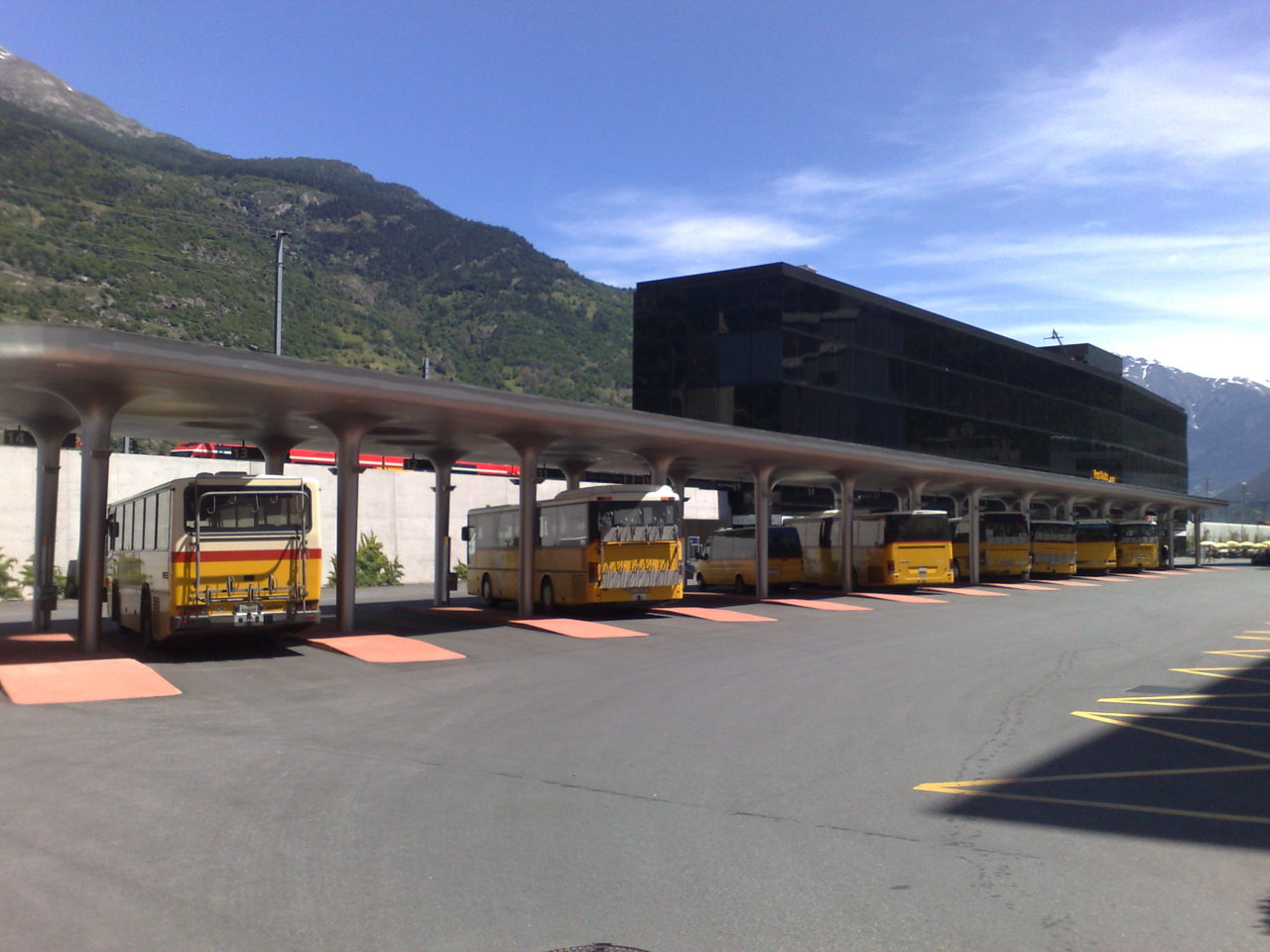
Ein europaweiter Trend ist der immer stärkere Ausbau und die Verbesserung von Verkehrsinfrastrukturen. Dabei bringt deren Ausbau in den betroffenen Gebieten grössere Veränderungen im städtebaulichen Gefüge mit sich. Gleichzeitig mit diesen physischen finden jedoch auch unbemerkt sozialräumliche Veränderungen statt, die kaum wahrgenommen werden.
Der Lötschbergbasistunnel und die Gemeinde Visp
Neue Verkehrsinfrastrukturen werden zumeist nur unter dem Aspekt der Ökonomie und Effizienz betrachtet. Zu den sozialräumlichen Auswirkungen gibt es jedoch nur wenige Untersuchungen. Unter Sozialraum wird der Stadtraum verstanden, den die Menschen vor Ort nutzen oder auch aktiv gestalten, sprich sich sozial aneignen. Die vorliegende Arbeit will der Betrachtung der Wirksamkeit von neuen Verkehrsinfrastrukturen deswegen eine neue Ebene hinzufügen, nämlich die der sozialräumlichen Auswirkungen. Als Untersuchungsbeispiel dient der neue Lötschbergbasistunnel.
Durch die Eröffnung des 34,6 km langen Lötschbergbasistunnels für den fahrplanmässigen Betrieb im Dezember 2007 sind die Gemeinden des Oberwallis stark in den Einzugsbereich des Kantons und des Gross- und Wirtschaftsraumes Bern eingebunden worden. So verkürzt sich beispielsweise die Reisezeit mit der Bahn zwischen den Gemeinden Visp (Oberwallis) und Bern von zwei Stunden auf unter eine Stunde. Der ländlich geprägte Raum des Oberwallis bekommt somit einerseits eine starke Anbindung an das urbane Zentrum von Bern, andererseits erhält das Oberwallis selbst ein urbanes Verkehrsangebot.
Die Errichtung der oben erwähnten Verkehrsinfrastruktur bewirkte und bewirkt im Oberwallis jedoch auch starke städtebauliche Veränderungen. So sind für die Neugestaltung des Bahnhofgebietes in Visp nicht weniger als 12 Gebäude abgerissen worden und der neue Bahnhof wurde als Dienstleistungszentrum mit Einkaufsmöglichkeiten und ausgedehnten Öffnungszeiten errichtet. Diese städtebaulichen Veränderungen wirken jedoch nicht nur auf die Nutzenden der neuen Verkehrsinfrastruktur, sondern auch auf die «Daheimgebliebenen». Auch sie müssen sich den neuen Realitäten anpassen, sich die neuen materiellen Räume sozial aneignen, ohne je die neue Verkehrsinfrastruktur nutzen zu müssen.
Die Studie untersucht diese Zusammenhänge in der Gemeinde Visp in den letzten fünf Jahren und zeigt ein differenziertes Bild städtebaulicher und sozialräumlicher Auswirkungen einer neuen Verkehrsinfrastruktur.